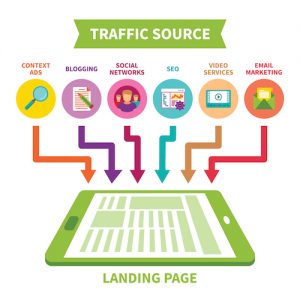In my last post, I listed 19 of the most recognized employee social advocacy tools on the market but watch this space – I’m sure new ones will be added to the list.
I’ve been lucky enough to view demonstrations and even use many of the tools first hand.
As a result, I’ve collated what I feel are some of the best features to watch out for that, in all honesty, will save you time and ultimately money when it comes to selecting an employee advocacy tool.

1. Integrate Your Internal Communications
It’s easy to mistake employee advocacy as just a way of getting content into the hands of employees to share to their social networks, but recent research from Altimeter, a Prophet company (via @EdTerpening) shows the impact goes way beyond just amplification of content.
When asked how employees felt after sharing content, the top two answers were “I feel more connected and enthusiastic about the company I work for” and “I better understand my employer’s business”.

Employee advocacy is a great way to keep employees informed of business updates. As such, one of the vendors (Dynamic Signal) have broadened their suite of offerings to incorporate a stronger internal communications focus allowing internal only content to be shared with employees. What’s more, employees can engage with the “internal only” content within the platform reducing email traffic around the business.
2. Calculate Earned Media Value
Truth be known, most of the advocacy tools incorporate a strong set of analytics including most engaged employees, leader boards, impressions, clicks, engagements – all the typical social metrics you would come to expect from a social management tool.
The ability to slice and dice the information is where you’ll start to extract value from the data so it’s important that you can export the data for further analysis. According to the Altimeter, a Prophet company study, only 11% of brands report “Reduction in social advertising spend” as a metric their capture and I feel organisations are really missing an opportunity here.

Some tools address this opportunity quite well. SmarpShare will allow you to see the Earned Media Value of the clicks generated from your employees – a metric that marketing will be interested to benchmark against existing paid media spend.
3. Connect Your Inbound Sales & Marketing Efforts
In addition to the base level analytics above, you may also want to consider integrating Google tracking links. If your business uses Google Analytics to measure website impact, some employee advocacy tools will allow you to add UTM parameters to the end of your links so that you can tally the impact of employee shares with your marketing efforts.
If you were to share a blog post via your advocacy tool including a UTM code attached to the end of the URL, you should be able to track the path of any generated traffic through your website and even to conversion/download.
If your marketing automation system is connected with your CRM system, you could even track this through to pipeline. Imagine that…calculating the value of referral marketing and #socialselling.
4. Save Time With Intelligent Content Curation
Content can fast become an administrative headache for anyone managing an employee advocacy tool. Finding content, approving content, archiving content – it can become a full time job unless you have it set up correctly.
In fact, providing content to share (53%) and keeping employees engaged in the program (49%) lead the list of challenges brands faced when driving employee advocacy programs (Source: Altimeter, a Prophet company)

What I like about the offering from TrapIt is the intelligent learning capability that’s built into the platform. It will track the kind of content an employee shares and will start to customise their individual experience based on sharing preferences.
This approach provides a better user experience for the employee but can also reduce a lot of the admin hassle associated with correctly tagging and categorising content.
5. Tailor The Employee Experience
Some platforms such as Grapevine 6 Publisher go one step further and provide the content customisation ability up front.
Interestingly, they’ve built their entire platform around the individual employee rather than a centrally managed corporate hub. When employees align their social accounts to the tool, it will scan the content they’ve already shared and make suggestions as to what might interest them.
This gives employees a kick-start in the right direction. They’re not bamboozled by a screen full of content that isn’t relevant to them. As such they’re more likely to engage and participate from that first login experience.
6. Make It Easy For Employees To Contribute
They key to driving a successful content hub is to quickly move it from being a ‘managed’ hub to a ‘self-fuelling’ system.
Either way, a well-managed advocacy program will have a healthy mix of branded and non-branded content. Encouraging employees to feed content into the system is a great way of exchanging knowledge around the company and across the network.

Tools like PostBeyond and Dynamic Signal allow employees to add a Chrome Extension to their browser so they can easily post content to the advocacy tool without copying and pasting URLs. By altering the incentive formula, it’s possible to shift the weighting of awarded points – participants are awarded more for contributing than just sharing.
7. Think Big: Include The Eco-system
Finally, I believe it’s important to recognise that advocacy goes beyond the employee network. There is no reason why the entire business eco-system cannot get involved in an advocacy program including partners and even customers. Having a tool that is flexible enough to grow with the social advocacy program is an advantage.
This is what I appreciate about Influitive. These guys have come from the customer advocacy end of the spectrum and worked it back into the employee advocacy space. They understand the value of referral marketing and focus heavily on community building and the advocate experience.
Training + Tools + Content = Social Advocacy Success
It’s important to recognise the learning journey that employees go through when they start to build their professional brand online. Sharing content comes later in that journey – they first need to build their profile, build their network, listen to the industry and start engaging with others first.
For those that embark on sharing, the next logical step is content creation and this is where I believe it gets really interesting.
Encouraging employee generated content has to be the most engaging and authentic social strategy a business can lead. Empowering employees to have a voice and then have the brand amplify their employees voice just tips the whole advocacy proposition on its head.
It’s not just about getting content to employees – it’s about facilitating the process whereby employees can share peer-generated content. A more credible and authentic content strategy.

I currently don’t see any of the advocacy vendors stepping into this space. Newscred have done a lot of work around content creation workflows and publishing but not via advocacy channels – just branded channels. It’ll be interesting to see whether this part of the tool evolves with time.
In the third and final part of this blog post series I’ll list out some questions you might want to ask yourself and the advocacy tool vendors.
Let me know if there’s a topic you’d like me to cover – feel free to suggest it in the comments section below.
Digital & Social Articles on Business 2 Community(32)
Report Post





